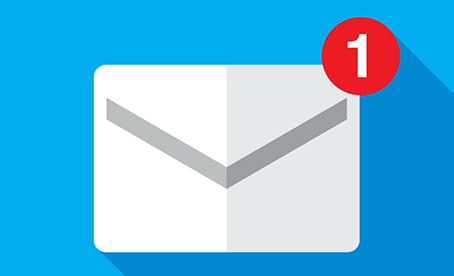The True Meaning of Customer Success

Businesses of all sizes want to see their customers achieve successful outcomes with the products and services they’ve purchased, right? The answer should be a resounding yes.
In today’s landscape, businesses who aren’t putting an emphasis on helping their customers reach and exceed their goals, are obstructing their own success. Modern organizations understand that their business is inherently intertwined with the success of their customers. This is especially true for subscription, consumption and managed services-based businesses (recurring business model).
But the definition and chartered course towards customer success isn’t as simple as it once was, and there are stark differences between a recurring and a non-recurring business’ customer success needs.
Customer Success 2.0
To define modern customer success, let’s start with what it is not. Customer success is not a fancy term for account management or customer service. It is also not just a new name for a support organization, or onboarding and professional services organization.
So, what is true customer success? It is a business’ continuous, proactive, and tailored approach to ensuring their customers’ short- and long-term success. Customer success should include a defined strategy and predictive analysis on potential obstacles and how to overcome them.
To provide this level of engagement, organizations must be dedicated to ensuring customers achieve full-scale success, on an ongoing basis - or in other words, throughout the lifecycle of the relationship.
Customer Success – Recurring vs. Non-recurring
Outside the subscription market, customer success might just mean account management. The evolution of true customer success comes from the need to solve business gaps that arose in the technology subscription market.
Of course, you can find customer success initiatives in non-subscription businesses, but the differences between the two versions of customer success start with fundamentally different financial mechanics.
Different financial mechanics create different needs, and the recurring and non-recurring market have different customer success needs. To illustrate this let's go through a few things that make the two business models different.
Customer Acquisition Cost (non-recurring)
CAC is the total cost for you to acquire a new customer. A simplified calculation would include all costs of your sales, technical pre-sales and marketing activities spent to acquire that customer or close a specific deal.
In a non-subscription world, if your gross margin on that deal is higher than your CAC, you broke even and ideally made a profit. Nothing fancy, business as usual.
In a non-recurring model, a business just needs to have account management and customer support to make sure when a customer buys again, they buy from you. In this world, there isn't really something you could call a lifecycle.
Customer Acquisition Cost (recurring)
With the same CAC in a subscription business, the difference is the way in which this business pays back that CAC. These businesses won’t receive their gross margin back up front, but in small increments every month. The industry average until the CAC pays back, is about 18 months.
The risk here is that a customer can stop subscribing at any time, maybe after month 1, maybe after month 17.
The Subscription Advantage
From a financial perspective, a 3-year contract can mitigate this risk. However, the promise and benefit of cloud and subscriptions is that you can change at any time and scale up or down.
This premise becomes even more critical in a cloud consumption (vs. subscription) business. In IaaS for example, there are much higher costs to acquire a customer and your customer only pays for what they use, when they use it. This means you cannot predict when your CAC gets paid back, other than ensuring the customer realizes its value and uses the IaaS solution continuously.
In these models, success is predicated on the customer staying much longer than the 18 months. The average lifetime across all your customers should be, at minimum double your CAC payback period, so 36 months in this example.
Even if a customer doesn't leave, but they stop using one product and replace it with another, there is now a new sales cost (the cost of the engagement to change products) that adds to the original cost... basically, the time until you break even draws out further.
There are three learnings from that:
- In a subscription world, your sales teams selling the right product for the customer every time is critical for your business’ bottom line. Not the biggest product or the most expensive one. The product that a customer will use for the longest time period and get the most value out of.
- A dedicated customer success organization that manages across the entire subscription lifecycle, forever, is crucial for emerging businesses.
- Not just any customer success organization will do. There are imperatives that should be considered before building a customer success organization.
A Few Things to Consider
Before creating a customer success organization, businesses should ensure that the organization focuses on key areas:
- A valuable customer success organization should onboard every customer and every single user to a level in which they use all of what they’ve purchased.
- Checking on and engaging with every customer to ensure they are fully using the product should be a regular practice (weekly or monthly) for the customer success organization.
- A customer success organization needs to anticipate problems and fix them. If done right and continuously managed throughout a lifecycle, there should be no need for a renewal conversation.
- A customer success organization is in an ideal position to drive upsell and cross- sell, as they know the usage and customer intimately. Upselling and cross-selling existing customers is up to 4x as profitable as acquiring new customers.
Ingram Micro Cloud Global Customer Success
To differentiate from their competition and drive growth, businesses need a practice that can help them cultivate relationships with customers and deliver the full potential of their solutions.
This is how our Global Customer Success organization works with you. We provide the structure and support to connect you and your customers with a countless number of problem solvers and innovators into a larger, more distributed network. So, it’s less about our ecosystem—and more about envisioning, building and growing your ecosystem.
-
Category Growth & Best Practices
-
Written by Editor
-
Published on December 20, 2021
Editor, Author, Ingram Micro
The Ingram Micro Cloud Blog Editor is a collection of associates responsible for identifying, writing and curating the most relevant topics and articles for our valuable partners and readers.































